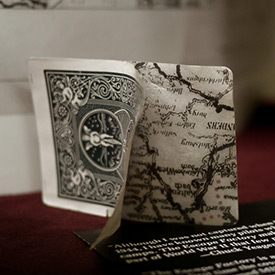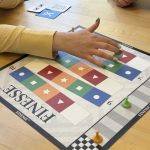A special deck of cards with a map hidden INSIDE the layers of the paper! When was it made, and what was it used for?
A Map Inside the Cards

A Map Inside the Cards
A special deck of cards with a map hidden INSIDE the layers of the paper! When was it made, and what was it used for?
During World War II, the United States Playing Card Company (USPCC) collaborated with American and British intelligence agencies to develop an innovative tool to assist Allied prisoners of war (POWs) in escaping from German camps. This initiative led to the creation of the “map deck,” a seemingly ordinary set of playing cards that concealed maps within their layers.
Each card in the deck was crafted by embedding a segment of a map between its two paper layers. When soaked in water, the cards could be carefully peeled apart to reveal these hidden map pieces. Assembling the complete map provided detailed escape routes, including roads, rivers, and landmarks, guiding POWs to safety.
These decks were discreetly distributed to POWs, often through care packages. The Geneva Convention permitted prisoners to receive mail and packages, which the Allies used to their advantage by sending these covert tools disguised as recreational items.
The exact number of map decks produced remains unknown due to the secrecy surrounding their creation. However, it’s documented that these decks facilitated at least 32 successful escapes from Colditz Castle, a high-security German POW camp, and prompted over 316 escape attempts.
Today, the International Spy Museum in Washington, D.C., houses the only two known surviving original map decks. In recognition of their historical significance, the USPCC has released limited edition reproductions of the map deck, allowing enthusiasts and historians to appreciate this ingenious wartime artifact.
The map deck stands as a testament to the resourcefulness and ingenuity employed during World War II, highlighting the creative methods used to aid soldiers in their quest for freedom.
SOURCES








